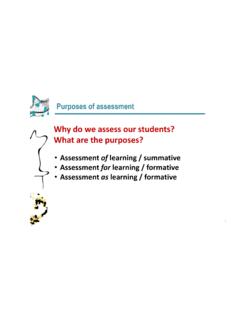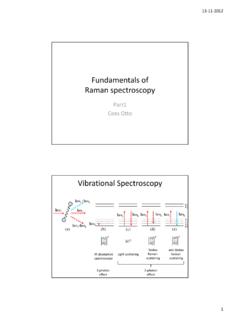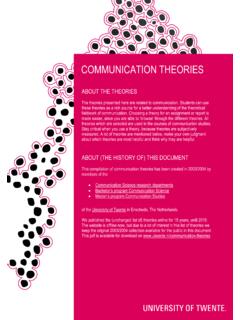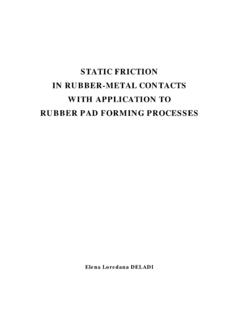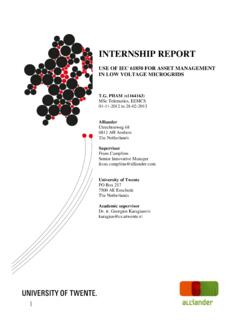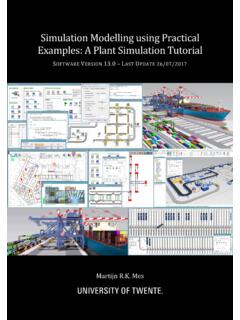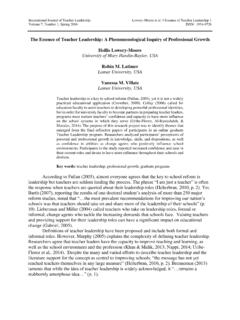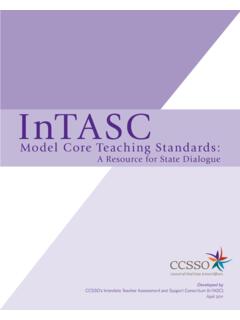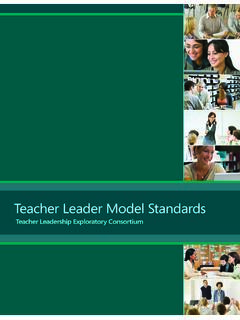Transcription of Formative Assessment Strategies - Universiteit Twente
1 Compiled by K Lambert, OCPS Curriculum Services, 4/2012 - Tools for Formative Assessment - - Techniques to Check for Understanding - - Processing Activities - 1. Index Card Summaries/ Questions Periodically, distribute index cards and ask students to write on both sides, with these instructions: (Side 1) Based on our study of (unit topic), list a big idea that you understand and word it as a summary statement. (Side 2) Identify something about (unit topic) that you do not yet fully understand and word it as a statement or question. 2. Hand Signals Ask students to display a designated hand signal to indicate their understanding of a specific concept, principal, or process: - I understand_____ and can explain it ( , thumbs up). - I do not yet understand _____ ( , thumbs down). - I m not completely sure about _____ ( , wave hand).
2 3. One Minute Essay A one-minute essay question (or one-minute question) is a focused question with a specific goal that can, in fact, be answered within a minute or two. 4. Analogy Prompt Present students with an analogy prompt: (A designated concept, principle, or process) is like _____ because _____. 5. Web or Concept Map Any of several forms of graphical organizers which allow learners to perceive relationships between concepts through diagramming key words representing those concepts. 6. Misconception Check Present students with common or predictable misconceptions about a designated concept, principle, or process. Ask them whether they agree or disagree and explain why. The misconception check can also be presented in the form of a multiple-choice or true-false quiz. 7. Student Conference One on one conversation with students to check their level of understanding.
3 8. 3-Minute Pause The Three-Minute Pause provides a chance for students to stop, reflect on the concepts and ideas that have just been introduced, make connections to prior knowledge or experience, and seek clarification. / LJ / / / / / nj 9. Observation Walk around the classroom and observe students as they work to check for learning. Strategies include: Z 10. Self- Assessment A process in which students collect information about their own learning, analyze what it reveals about their progress toward the intended learning goals and plan the next steps in their learning. 11. Exit Card Exit cards are written student responses to questions posed at the end of a class or learning activity or at the end of a day.
4 12. Portfolio Check Check the progress of a student s portfolio. A portfolio is a purposeful collection of significant work, carefully selected, dated and presented to tell the story of a student s achievement or growth in well-defined areas of performance, such as reading, writing, math, etc. A portfolio usually includes personal reflections where the student explains why each piece was chosen and what it shows about his/her growing skills and abilities. 13. Quiz Quizzes assess students for factual information, concepts and discrete skill. There is usually a single best answer. Some quiz examples are: D Compiled by K Lambert, OCPS Curriculum Services, 4/2012 d & ^ W W D d Z 14. Journal Entry Students record in a journal their understanding of the topic, concept or lesson taught.
5 The teacher reviews the entry to see if the student has gained an understanding of the topic, lesson or concept that was taught. 15. Choral Response In response t o a cue, all students respond verbally at the same time. The response can be either to answer a question or to repeat something the teacher has said. 16. A-B-C Summaries Each student in the class is assigned a different letter of the alphabet and they must select a word starting with that letter that is related to the topic being studied. 17. Debriefing A form of reflection immediately following an activity. 18. Idea Spinner The teacher creates a spinner marked into 4 quadrants and labeled Predict, Explain, Summarize, Evaluate. After new material is presented, the teacher spins the spinner and asks & d spinner lands in the Summarize quadrant, the teacher might say, List the key concepts just presented.
6 19. Inside-Outside Circle Inside and outside circles of students face each other. Within each pair of facing students, students quiz each other with questions they have written. Outside circle moves to create new p Z 20. Reader s Theater & d 21. One Sentence Summary Students are asked to write a summary sentence that answers the who, what where, when, why, how questions about the topic. 22. Summary Frames Description: A _____ is a kind of_____ that .. Compare/Contrast: LJ Problem/Solution: Cause/Effect 23.
7 One Word Summary Select (or invent) one word which best summarizes a topic. 24. Think-Pair- Share/ Turn to Your Partner teacher gives direction to students. Students formulate individual response, and then turn to a partner to share their answers. teacher calls on several random pairs to share their answers with the class. 25. Think-Write-Pair-Share Students think individually, write their thinking, pair and discuss with partner, then share with the class. 26. Talk a Mile a Minute Partner up giver and receiver Kind of like Password or Pyramid. Both know the category, but the receiver has his back to the board/screen. A set of terms will appear based on the category giver gives clues, while receiver tries to guess the terms. & stands up 27. Oral Questioning - How is _____ similar to/different from _____?
8 - What are the characteristics/parts of _____? - In what other ways might we show show/illustrate _____? - What is the big idea, key concept, moral in _____? - How does _____ relate to _____? - What ideas/details can you add to _____? - Give an example of _____? - What is wrong with _____? - What might you infer from _____? - What conclusions might be drawn from _____? - What question are we trying to answer? What problem are we trying to solve? Compiled by K Lambert, OCPS Curriculum Services, 4/2012 - What are you assuming about _____? - What might happen if _____? - What criteria would you use to judge/evaluate _____? - What evidence supports _____? - How might we prove/confirm _____? - How might this be viewed from the perspective of _____? - What alternatives should be considered _____? - What approach/strategy could you use to _____?
9 28. Tic-Tac-Toe/ Think-Tac-Toe A collection of activities from which students can choose to do to demonstrate their understanding. It is presented in the form of a nine square grid similar to a tic-tac-toe board and students may be expected to complete from one to three in a row . The activities vary in content, process, and product and can be tailored to address DOK levels. 29. Four Corners Students choose a corner based on their level of expertise of a given subject. Based on your knowledge of _____ , which corner would you choose? Corner 1: The Dirt Z (There s so much dust, I can t see where I m going! Help!!) Corner 2: The Paved Z (It s fairly smooth, but there are many potholes along the way.) Corner 3: The Highway ( I feel fairly confident but have an occasional need to slowdown.) Corner 4: The interstate (I m traveling along and could easily give directions to someone else.)
10 Once students are in their chosen corners, allow students to discuss their progress with others. Questions may be prompted by teacher . Corner One will pair with Corner Three; Corner Two will pair with Corner & for peer tutoring. 30. Muddiest (or Clearest) Point This is a variation on the one-minute paper, though you may wish to give students a slightly longer time period to answer the question. Here you ask (at the end of a class period, or at a natural break in the presentation), "What was the "muddiest point" in today's lecture?" or, perhaps, you might be more specific, asking, for example: "What (if anything) do you find unclear about the concept of 'personal identity' ('inertia', 'natural selection', etc.)?". 31. 3-2-1 3 things you found out 2 interesting things 1 question you still have 3 differences between ___ 2 effects of __ on ____ 1 question you still have about the topic 3 important facts 2 interesting ideas 1 insight about yourself as a learner 3 key words 2 new ideas 1 thought to think about Write 3 questions about the text (unfamiliar words, confusing passages or ideas) Write 2 predictions based on the text (what will happen next based on the reading) Make one connection based on the text (connect to something you know or have experienced) 32.
